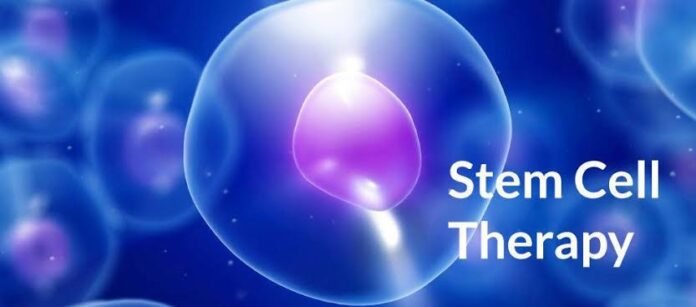Human body is composed of many cells, tissues and organs along with stem cells. Every cell is originated and differentiated by key cells in the body, known as Stem cell. Stem cells are present in the body throughout the life of an individual. Stem cells are used to treat many disorder and damaged cell of a body.
Stem cell therapy has become a great point of discussion now a days. Everyone wants to know about stem cells and how they work. So let us understand, What are stem cells? What are the Types of stem cells? Where stem cells are found? How stem cells work? What is stem cell treatment? Is stem cell treatment really promising? So here is the answer to these questions.
What are stem cells?
Stem cells are un-specialized cells within body that give rise to specialized cell types.
Stem cell are group of specific type of cells within a human body, that have the capability to develop as various distinct cell types with specialized functions. They are self renewable.
Stem cells divide through simple mitosis division to generate new cells and then differentiate it’s function. It replaces the damaged cells or tissues from the body. When a stem cell divides, it forms daughter cell. Each daughter cell has the potential to become another cell type with specialized function or it can remain as stem cell. Specialized cell type can be, muscle fibre, elastin fiber, nerve fibre and others in human body.
These are precursor cell or like a building material in the body. Self renewable property of stem cells refers to the ability of a cell to proliferate without senescence or loss of differentiation potential.
Classification of Stem Cells
Stem cells are potent to produce new cells. This potency of stem cell is defined by the types of more differentiated cells that the stem cell can make. The stem cell can be :-
- Totipotent– These cells can divide and produce all cell types of the developing organism. Eg, embryonic cells and placenta tissues.
- Pluripotent– These cells produce embryonic cells, germ cells and cells from any of the germ layer.
- Multipotent– These produce cells only within a particular germ layer, ie. Cells of heart are mesodermally originated, so it can produce only organs that are made from mesoderm layer.
- Unipotent– These cells produce cells of single cell type but not any other cell, ie. Germ cell that produces only germ cells, egg or sperm.
Types of stem cells
- Stem cells are originated from embryo first. These are of 4 types-
- 1) Embryonic stem cell (ES cell) – These are derived from the inner cell mass of a blastocyst stage of embryo implantation. This stage has about 100-150 stem cells in embryo 4-5 days post fertilization. These are pluripotent cells and can differentiate into any cell originating from the three germ layers. These cells in the embryo provide new cells to the developing foetus.
- 2) Adult stem cell– These are present in adult tissues but in small proportion. These are less efficient than ES cell. These are multipotent cell. The adult stem cell can divide indefinitely. They can either produce cells of same type of organ or regenerate full organ. They remain in dormant state until body requires an urgent replace or repair of cell. These stem cells are present in bone marrow, brain, liver, skeletal muscles, skin, blood and blood vessels. These can not produce all type of cells. Although studies and researches will bring more innovation in this step too.
- 3) Induced Pluripotent stem cells- Also known as ips cells. These cells are produced in the laboratories under preferred and optimal conditions. For this, scientists extract out the sample from embryo or tissue. They are then placed in controlled culture to grow and divide. The cells are then dividing continuously, this is called stem cell line. This can be freezed and stored for research work. These are then stimulated to produce a specific type of cell, this process is called directed differentiation. In this way, stem cell production is induced.
- 4) Mesenchymal stem cells- MSCs come from stroma or connective tissues. These create new tissues, organs such as bones, fat cells, mesenchymal cells and cartilages.
How stem cell works?
- Embryonic stem cell present in blastocyst are naturally grown stem cells which can be transformed to any other cell, tissues or organs. This can be extracted, and in lab scientists can create stem cell line for research. These have more potential to treat disease and injury. But endless division of ES cell can also cause mutations.
- Adult stem cell are limited to divide and differentiate. Example- Hematopoietic stem cells which form blood and immune cells of body can renew itself. These are helpful for therapies like blood cancer. Mesenchymal stem cell help to renew connective tissues of specific organ. Fetal stem cells renew the neural tissues in the growing foetus. Every individual have these type of stem cells within the body. These are used for reducing inflammation and repair of tissues within body.
- Induced Pluripotent stem cell are produced in petri dishes. These are still under study and researches that how it can be used to treat vital diseases of human.
- Stem cell Therapy completes in six steps. Stem cell are moved to blood stream through chemotherapy or synthetic induction. From blood, stem cells are extracted to grow more cells and then freezed. This is again send back to body through drip and chemotherapy to wipe out bone marrow. Recovery of patient in 3-6 months.
Applications of Stem Cell Therapy:
Stem cell therapy deals with the understanding of genetic information about any particular disease like cancer and birth defects. It refers to the treatment of dysfunctional organ, diseased organ or replacement of any tissue using stem cells.
This therapy suggest a way to treat the diseases. Stem cells have property to replace damaged cells and in treating extensive burns and to restore blood system in patients. Scientists use stem cell to model a disease process in labs and understand about the proper way to cure.
Stem cell Therapy is used to treat neural diseases such as Parkinson’s disease,Hutington’s disease and Alzheimer’s disease. The stem cells are used to replace and repair damaged neurons, damaged organs like liver and others.
Bone marrow transplant are an example of stem cell Therapy in which a donor’s bone marrow is used to treat skin disease like leukemia. Induced Pluripotent stem cell therapy are used to reintroduce the signals for a particular type of cell repair process. Ipsc are used in retinal pigment epithelium therapy for repairing the damaged cell of patient’s eye.
In all of these, the goal is for healthy cells to become integrated into the body and begin to function like the patient’s own cell. This therapy has proved to be successful in many ways. Many people are leading healthy life after a stem cell therapy.














































